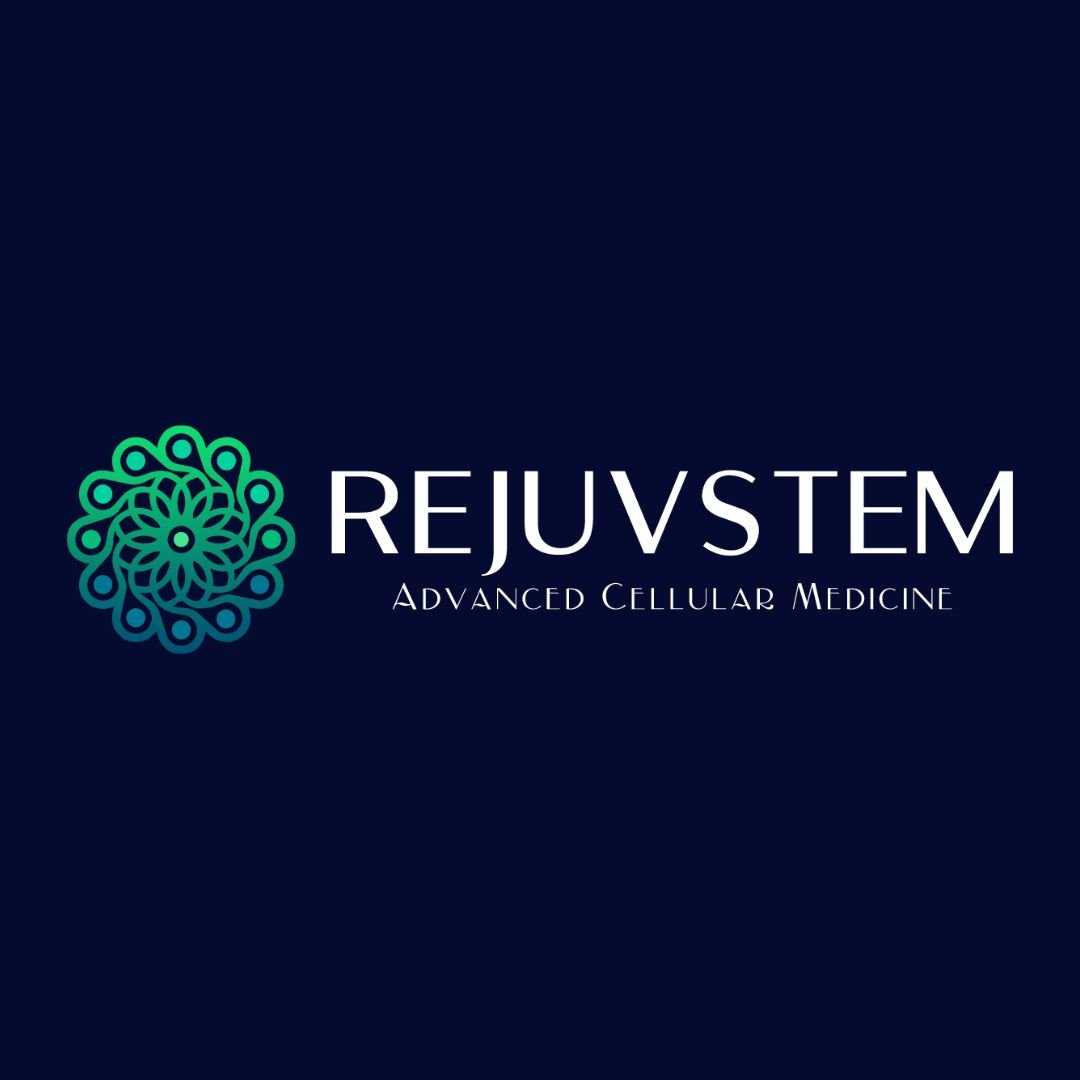Complete Guide to Stem Cell Treatment Cost for COPD in Mexico
.jpg)
If you or a loved one are living with Chronic Obstructive Pulmonary Disease (COPD), you know how challenging it can be to manage its symptoms and maintain a good quality of life.
Traditional treatments often focus on symptom management, but many individuals seek alternative or experimental therapies to potentially improve lung function and reduce progression. One such option gaining attention is stem cell treatment, with Mexico emerging as a prominent destination for those exploring this innovative approach.
Many patients are turning their gaze south of the border, specifically to Mexico, for stem cell therapy for COPD, primarily due to its reputation for affordability and accessibility compared to other nations.
While the prospect of new treatments offers hope, it's natural to have questions about the financial implications. Understanding the costs involved, what influences them, and what to expect from the treatment process is crucial when considering medical travel for COPD care.
What is the actual cost of stem cell treatment for COPD in Mexico?
The price range for stem cell therapy for COPD in Mexico is quite broad because several factors contribute to the final cost. These treatments are not standardized in the same way conventional pharmaceutical drugs are, leading to variations from one clinic to another.
Patients often find Mexico offers a more budget-friendly alternative to similar treatments in countries like the United States, where costs can easily exceed $30,000 to $50,000 or more, often without insurance coverage.
When considering the cost, it's important to ask what is included in the package. Some clinics offer an all-inclusive price that covers initial consultations, the stem cell infusions, follow-up care, and sometimes even local transportation or accommodation.
Others might quote a base price for the stem cells and procedures, with additional fees for diagnostics, medications, or extended stays. Always ensure you receive a detailed breakdown of expenses.
Why is Mexico a popular destination for stem cell therapy for COPD?
The appeal of Mexico as a medical tourism hub for stem cell therapy stems from several compelling factors. Firstly, the regulatory landscape for stem cell treatments in Mexico is generally more permissive than in countries like the United States, where many stem cell therapies are still considered experimental and are under strict FDA review.
This allows clinics in Mexico to offer treatments that might not be readily available elsewhere.
Secondly, the cost-effectiveness is a major draw. The operational expenses for medical facilities and professional fees for doctors are typically lower in Mexico, which translates into more affordable treatment prices for patients.
This economic advantage, combined with high-quality medical professionals and state-of-the-art facilities in major cities like Tijuana, Guadalajara, and Monterrey, makes it an attractive option. Furthermore, for patients in the United States and Canada, Mexico offers convenient travel with many clinics located just across the border.
What types of stem cells are used for COPD treatment in Mexico?
Mesenchymal Stem Cells (MSCs) are the preferred type of stem cells for conditions like COPD due to their unique properties. MSCs have anti-inflammatory, immunomodulatory, and regenerative capabilities.
This means they can help reduce inflammation in the lungs, modulate the immune response, and potentially promote tissue repair, which are all crucial aspects for managing COPD.
These MSCs can be sourced from various parts of the body or external donations. Common sources include:
- Adipose (fat) tissue: These are easily harvested through a mini-liposuction procedure and contain a rich supply of MSCs.
- Bone marrow: Bone marrow aspiration is another established method for obtaining MSCs, though it can be more invasive.
- Umbilical cord tissue: This is a rich source of young, potent MSCs, typically sourced from donated umbilical cords after healthy births. These are considered allogeneic (from a donor) and are often preferred for their higher proliferative capacity and lower immunogenicity.
The choice of stem cell source can sometimes influence the cost and the specific treatment protocol offered by clinics in Mexico.
Is stem cell treatment for COPD in Mexico FDA approved?
It's vital for patients to understand the regulatory differences between countries. While stem cell treatments are offered in Mexico, they do not hold FDA approval for COPD. The U.S. Food and Drug Administration (FDA) has very stringent requirements for new medical treatments, demanding rigorous clinical trials to prove both safety and efficacy before granting approval.
In Mexico, the regulatory environment allows for more experimental and advanced therapies to be offered, often under different guidelines. This does not necessarily mean the treatments are unsafe, but it does mean they are considered investigational by U.S. standards.
Patients should conduct thorough research and understand that while Mexican clinics operate within their own country's legal framework, the treatments might not have undergone the same extensive scrutiny as FDA-approved therapies.
What factors influence the total cost of stem cell therapy for COPD in Mexico?
The total cost is a sum of various components, making it dynamic from one patient to another and one clinic to another. Here's a breakdown of common influencing factors:
- Type and Quantity of Stem Cells: Allogeneic (donor) stem cells, especially from umbilical cord tissue, can sometimes be more expensive due to sourcing and processing. The total number of cells administered, often measured in millions, directly impacts the cost. Higher cell counts or multiple infusions typically mean higher prices.
- Clinic Reputation and Facilities: Established clinics with state-of-the-art equipment, advanced lab facilities for cell processing, and a strong track record may charge more. These clinics often invest heavily in quality control and patient safety protocols.
- Doctor's Experience and Specialization: Highly experienced physicians specializing in regenerative medicine and respiratory conditions might have higher consultation and procedure fees.
- Treatment Protocol and Number of Infusions: A comprehensive treatment plan might involve multiple infusions over several days or weeks, increasing the overall cost. Some protocols include supplementary treatments like hyperbaric oxygen therapy or nutritional support.
- Diagnostic and Follow-up Care: Initial diagnostic tests, pre-treatment evaluations, and post-treatment monitoring are often included, but their extent can vary. Long-term follow-up can sometimes be an additional cost.
- Additional Services: Some clinics offer concierge services, including airport transfers, translation services, and accommodation assistance, which can be bundled into the cost or charged separately.
It's crucial to obtain a detailed quote that specifies what exactly is covered by the quoted price.
How long does a typical stem cell treatment for COPD last in Mexico?
The duration of a stem cell treatment for COPD in Mexico is not an extended hospital stay, but rather a focused period of care. Patients typically need to plan for a stay ranging from a few days to a week.
This timeframe allows for a thorough initial consultation and assessment, which includes reviewing medical history, current lung function tests, and possibly new diagnostics to tailor the treatment plan.
The actual stem cell infusions are usually performed over one or two days, often through intravenous (IV) administration, directly into the bloodstream. Some protocols might involve nebulization or direct lung delivery, depending on the clinic and patient's condition.
Following the infusions, clinics often require a day or two for observation to ensure there are no immediate adverse reactions and to provide post-treatment instructions. While the treatment itself is relatively short, patients should factor in travel time and potential rest days when planning their trip.
What are the potential benefits of stem cell treatment for COPD?
For individuals struggling with COPD, any potential improvement in symptoms can significantly impact their daily lives.
Stem cell therapy is being explored for its ability to address some of the underlying pathologies of COPD, rather than just managing symptoms. The regenerative and anti-inflammatory properties of mesenchymal stem cells are particularly promising.
Patients who have undergone stem cell treatment for COPD have reported a range of potential benefits, including:
- Reduction in Inflammation: Stem cells can help mitigate chronic inflammation in the airways and lungs, which is a hallmark of COPD.
- Improved Lung Function: Some patients experience a measurable improvement in lung function tests, such as FEV1 (forced expiratory volume in one second), and feel less shortness of breath.
- Enhanced Exercise Tolerance: With better breathing and reduced symptoms, patients may find it easier to perform daily activities and engage in light exercise.
- Decreased Exacerbations: A reduction in the frequency and severity of COPD exacerbations can lead to fewer hospitalizations and a more stable condition.
- Better Quality of Life: Overall, many patients report a significant improvement in their general well-being and ability to enjoy life more fully.
It's important to remember that these are potential benefits and individual responses to stem cell therapy can differ. It is not a cure for COPD but aims to improve the condition's management.
What are the risks or side effects of stem cell therapy for COPD?
Like any medical procedure, stem cell therapy carries some inherent risks, though serious complications are uncommon, especially when performed in reputable clinics. The most frequently reported side effects are mild and transient, similar to those experienced with many intravenous procedures.
Common, mild side effects may include:
- Pain, bruising, or swelling at the injection or IV site.
- Temporary fever, chills, or fatigue, often described as flu-like symptoms.
- Headache or nausea.
More serious, though rare, risks can include:
- Infection: Any procedure involving injections or IVs carries a minimal risk of infection, which can be minimized by strict sterile techniques.
- Allergic Reaction: Though rare with MSCs, an allergic reaction to the cells or other components of the treatment is possible.
- Clotting or Embolism: A theoretical risk, but extremely rare with proper administration.
- Tumor Formation: This is a highly debated and extremely rare concern, mostly associated with embryonic stem cells or pluripotent stem cells, and not typically observed with the adult mesenchymal stem cells used for COPD. Reputable clinics use fully differentiated MSCs to mitigate this risk.
It is essential to discuss all potential risks and side effects with the medical team and ensure the clinic has robust safety protocols in place.
How can I choose a reputable clinic for stem cell treatment in Mexico?
Selecting the right clinic is paramount to ensuring safety and increasing the likelihood of a positive experience. Given the evolving nature of stem cell therapies, thorough due diligence is essential:
- Accreditation and Licensing: Verify that the clinic is fully licensed by the Mexican health authorities (COFEPRIS). Some clinics might also hold international accreditations, which can be an indicator of adherence to global standards.
- Doctor's Credentials and Experience: Research the medical team, particularly the lead physician. Look for board certifications, specialized training in regenerative medicine or pulmonology, and extensive experience with stem cell treatments for respiratory conditions.
- Transparency in Protocols: A reputable clinic will be open about its stem cell sourcing, processing methods, and treatment protocols. They should clearly explain the type and quantity of cells used and the mode of administration.
- Patient Testimonials and Reviews: Seek out genuine patient reviews and testimonials. While individual results vary, consistent positive feedback regarding safety, professionalism, and patient care is a good sign.
- Comprehensive Consultation: A good clinic will require a thorough review of your medical records and may conduct its own diagnostic tests before recommending treatment. They should be able to answer all your questions honestly, including potential risks and realistic outcomes.
- Ethical Practices: Ensure the clinic adheres to ethical guidelines for stem cell research and therapy, especially concerning cell sourcing and patient consent.
Don't hesitate to ask for references or to speak directly with past patients if possible.
What should I consider when planning medical travel to Mexico for COPD treatment?
Medical travel requires careful planning to ensure a smooth and stress-free experience, especially for individuals with a chronic condition like COPD. Here are key considerations:
- Documentation: Ensure your passport is valid and check if you need a visa for entry into Mexico. U.S. citizens typically do not need a visa for tourist stays but will need a passport.
- Travel Logistics: Arrange flights and ground transportation to and from the clinic. Many clinics near the U.S. border offer airport pickups. Research accommodation options close to the clinic that are comfortable and accessible for someone with COPD.
- Travel Insurance: Standard travel insurance might not cover complications arising from elective medical procedures abroad. Consider purchasing specialized medical tourism insurance that offers coverage for medical complications, travel disruptions, and emergency medical evacuation.
- Language and Communication: While many medical staff in Mexican clinics speak English, having a translator or using translation apps can be helpful for daily interactions and understanding local services.
- Medical Records and Medications: Bring all relevant medical records, including recent lung function tests, imaging, and a complete list of your current medications. Plan for carrying necessary medications for your trip duration.
- Post-Treatment Care: Discuss with your Mexican clinic and your local physician how post-treatment follow-up and long-term care will be managed. Ensure there’s a plan for sharing medical reports and coordinating ongoing management of your COPD.
Being well-prepared can significantly reduce stress and allow you to focus on your treatment and recovery.
Ready to explore advanced treatment options for COPD in Mexico? PlacidWay connects you with leading clinics and specialized care providers globally, helping you find the right solution for your health needs. Discover more about stem cell therapy and other innovative treatments available through our network.


.png)














Share this listing